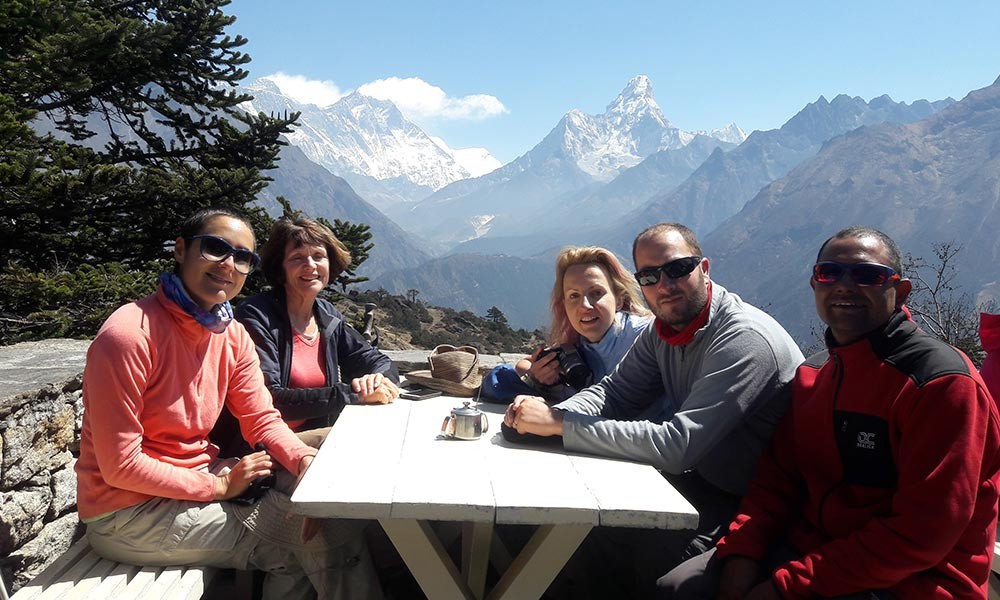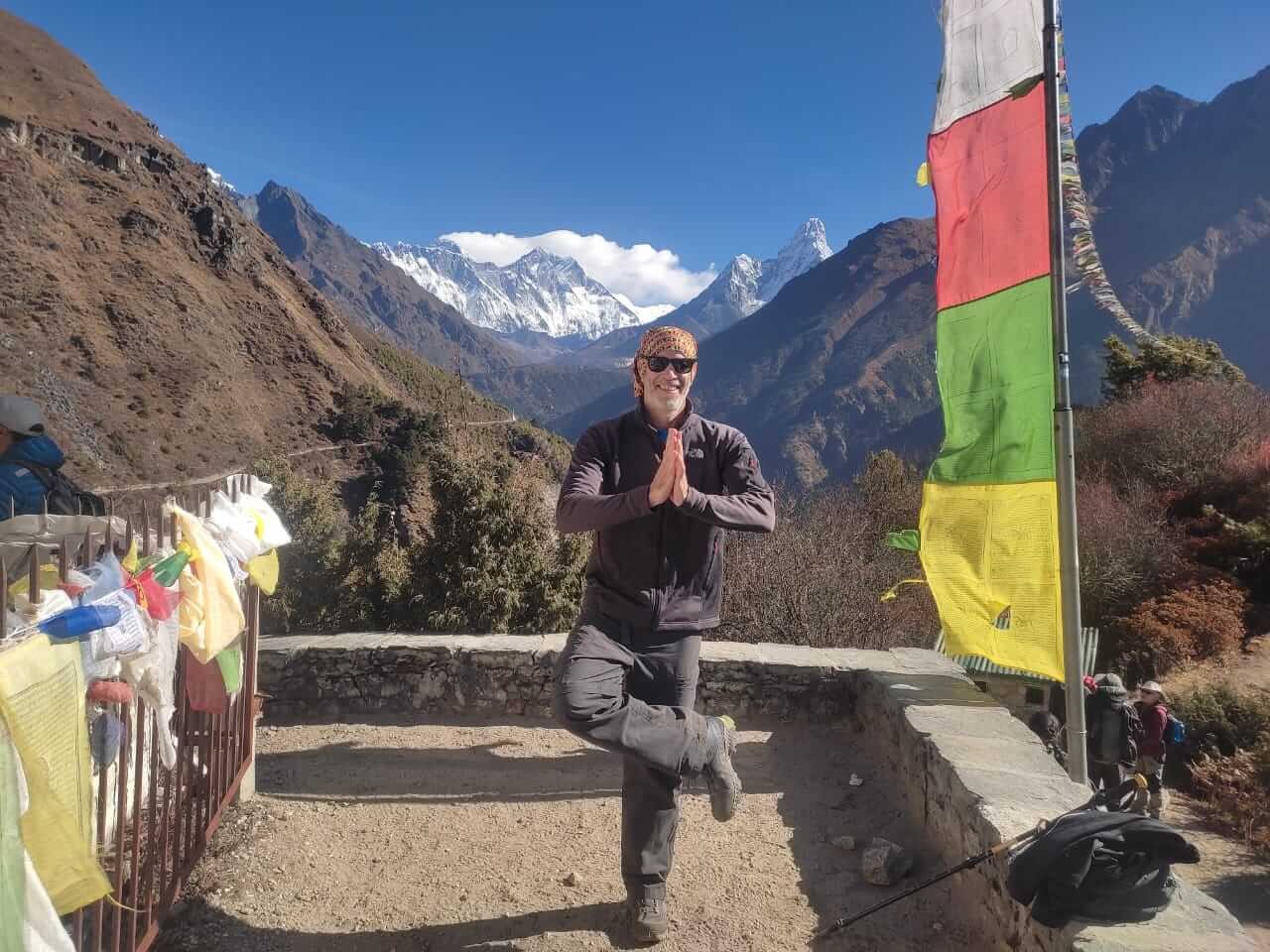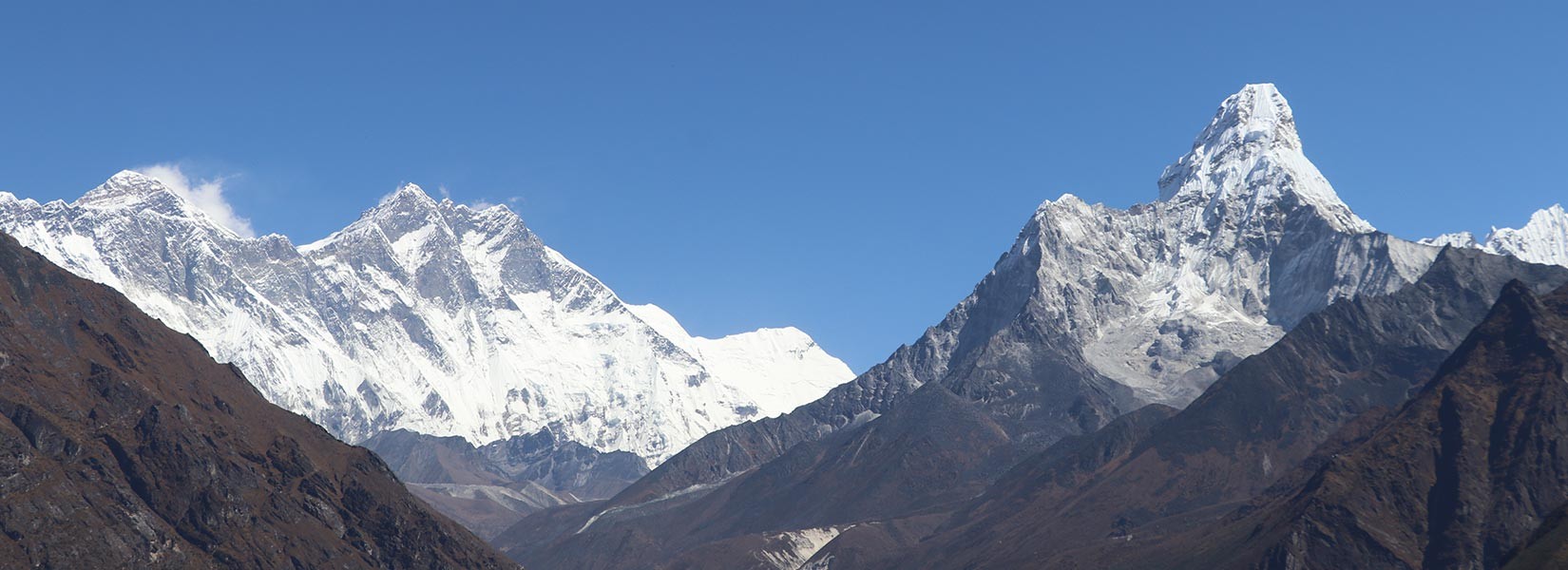Best Time for the Everest View Trek
The Everest View Trek is ideal from September to November and March to May. During these months, the weather is generally clear and stable, with fewer chances of rain or snow. However, the trails and accommodations can get crowded as these are the peak seasons.

Spring (March-May)
Spring season (March-May) is widely considered the best time for the Everest View Trek. The weather is mild and stable during this time, with no weather-related hassles. The temperature is moderate, making it quite comfortable for the trekkers. The clear skies and bright sunshine offer a spectacular view of the snow-capped mountains. The blooming rhododendrons make the region picturesque and the trek unforgettable.
Autumn (September - November)
Autumn is ideal for the Everest View Trek. The autumn season, which falls between September to November, has stable weather conditions. The skies are clear, and the temperature is on the moderate side. During this season, the skies are usually clear, offering breathtaking views of Mount Everest and other snow clad mountains.
The visibility is excellent, ensuring amazing photographs. The autumn season also includes various festivals, allowing you to interact with the local culture and traditions. Hence, the perfect weather, clear views, and opportunity for cultural exploration make Autumn the ideal time for the Everest View Trek.
Off seasons
The Everest view trek is doable during the off-season as well. The winters and summers are the off seasons in the Everest region. There are many challenges that you have to face in this season. The winters from December to February are excruciatingly cold, dropping below freezing temperatures. There are thick inches of snow along the trail. The summers bring heavy rain leading to slippery, leech infested trails.
Hence, it is only advised to trek in the peak season. If you are feeling adventurous, you can also take this trek in the off-season, especially in winter. However, you must remain adequately prepared with all the necessary gear and clothes.
Difficulties of the Everest View Trek
This trek is easy and suitable for beginner trekkers. However, it does involve some steep ascents in rugged terrains. Besides, the high altitude can be challenging for some. One of the primary difficulties of the Everest View Trek is altitude sickness. Altitude sickness is common as you climb higher and less oxygen is available. Acclimatizing properly and taking necessary precautions is a must during this trek. But, during this Everest View trek, it is less likely to get altitude sickness as you will hike to around 3,500m.
The trail in this short-duration trek can also be steep and strenuous. The trek involves high-altitude hiking. Hence, a good fitness level is essential. Being physically fit will help you arrive at your destination without any hassle and enjoy the journey to the fullest. Additionally, it can also reduce the risk of injury among trekkers.
The weather can be unpredictable even in the peak seasons. Hence you should prepare accordingly. Finally, the facilities such as food and accommodation may get limited so you will need to adjust to the high altitude. Hence, these are the various difficulties of the Everest View Trek.

Things to Consider for the Everest View Trek
Acclimatization
Acclimatization is essential for the Everest View Trek to tackle altitude sickness. This process helps your body adjust to the high altitude with less oxygen and air pressure. Altitude sickness can be dangerous and even life-threatening if not treated in time. Trekkers should acclimatize after each trekking day and have several rest days at higher elevations to allow your body to acclimatize. It's essential to not push yourself too hard to minimize the risk of altitude sickness.
Training regime
The trail also takes you through some of the most challenging terrain. So you must be able to complete this journey without any hassle. Hence, you must train well ahead with proper physical and mental exercises. These exercises will build your fitness and keep you in good shape. You will also be mentally prepared to tackle any conditions in the high altitude.
Travel Insurance
Trekkers taking this trek also have proper travel insurance. The trail of this trek passes through challenging landscapes, which means that injuries, altitude sickness, and others are quite common. Hence, proper travel insurance covering all these aspects above 4000m is necessary. Travel insurance will also cover you in any emergency conditions of evacuations if required.
Professional guides
Professional guides will help you with the navigation of this trek. They know the trail and greatly help the region. They will also help you learn about the region's local culture and influences. Porters are essential if you carry heavy backpacks. You must avoid trekking into the region with a heavy load. They carry around 20 to 25 kgs of weight, allowing you to track the beautiful region without any hassle.
Trekking gears and equipment
Travelers taking the trek must also have proper access to trekking gear and equipment. They will keep you safe and comfortable on this trek. It would help if you also carried an appropriate sleeping bag to tackle the cold. In the high altitude frigid conditions, the blankets in the tea houses are not enough.
Accommodation and Meal
Accommodation is another essential aspect of the trek. The beautiful trekking journey will allow you to stay in the local settlements of the region. These accommodations are simple and provide you with basic facilities. There are basic room facilities with a bed and blankets. You will need to carry your sleeping bag safely. You want to protect it from extreme cold weather conditions, especially at night.
Regarding the meals provided in the tea houses, you will get "Dal bhaat." The variety of meals in these key houses are not diverse as the food ingredients need to get transferred to the higher altitude region. However, some meals, like noodles and pasta, are at a higher altitude.
The cost of transfer is also relatively high in the region. The variety of hot beverages includes tea, coffee, and other hot drinks like garlic noodle soup, rhododendron tea, and lemon tea are available in the region. The trekkers can take their snacks like chocolate bars and protein bars so that they can eat these and satisfy their hunger.
FAQs - Everest View Trek
What is the Everest View Trek?
The Everest View Trek is a short duration trek in the Everest region that offers stunning views of the world's highest peak, Mount Everest, and other Himalayan mountains.
How long does the Everest View Trek last?
This trek is 5 days long, including the itinerary and acclimatization days.
What is the best time to do the trek?
The best time for the trek is from March to May and September to November. These are the Spring and Autumn season and provide stable weather conditions.
What is the difficulty level for the trek?
This trek is easy to moderate in terms of difficulty and is suitable for beginners.
What is the highest altitude you will reach during the trek?
The trek's highest point is Namche, located at an altitude of 3,440 meters (12,684 feet).
What accommodations will you stay during the trek?
Various types of accommodations, like tea houses, lodges, and guesthouses, are available during the trek. These accommodation facilities offer basic facilities such as a bed, blanket, and shared bathroom.
Do I need any permits for the trek?
Yes, trekkers must obtain a Sagarmatha National Park permit and Rural Pasang Lhamu Municipality Permit.
What is the weather like on the trek?
The weather in the high altitude can be unpredictable and can change within a few hours. Hence, you must prepare with all the necessary requirements for all weather.
What is the training required for the trek?
There is no specific training required for the trek. However, you must have a good fitness level and have some experience in high altitude trekking.
What are the prime attractions of the trek?
The major attractions of the trek include stunning views of Mount Everest and other snow-clad mountains, Buddhist monasteries, and Sherpa settlements. Trekkers will also get to experience the unique Sherpa culture, lifestyle, traditions, and hospitality.
 The Everest View Trek is a scenic, short-duration trek with magnificent views of Mt. Everest (8848.86m). While other Himalayan region treks include lengthy and strenuous trails, this trek is relatively easy in comparison. It is ideal for those who want to experience the beauty of the Himalayas but have no time for a standard 12 Day Everest Base Camp Trek.
The Everest View Trek is a scenic, short-duration trek with magnificent views of Mt. Everest (8848.86m). While other Himalayan region treks include lengthy and strenuous trails, this trek is relatively easy in comparison. It is ideal for those who want to experience the beauty of the Himalayas but have no time for a standard 12 Day Everest Base Camp Trek.





